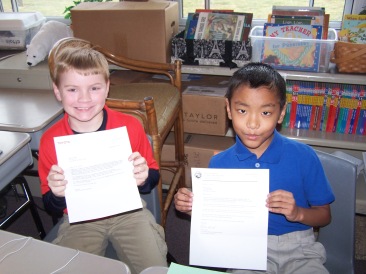Solving the Problem of Grading Authentic Tasks
I try to make things real. I don’t succeed all the time, but I know from research, and because I’ve seen it, that kids put forth more effort and learn more when their assigned tasks are real. If the sense an actual audience or practical goal for their work, they work more diligently to meet and surpass expectations.
But these kinds of tasks take time. Lots of it. Which can cause difficulty in the gradebook.

If you are blessed with a non-traditional report card that allows you enough freedom to report to parents whatever is most necessary, I’m jealous. However, if your report card you issue still looks the same as the one you got when you were in elementary school, I have some ideas for you.
First of all, don’t compromise your activities. If you know pushing worksheets onto kids will help you get enough grades to meet a quota, resist the urge to do it. I’m not saying I don’t ever hand out a worksheet, but the goal of any task should never be “I can get a grade from this.” If you’re giving students a worksheet just so you can grade it, there’s a better way.
The secret? Create the authentic student tasks you know are best for students, but figure out a way to give multiple grades to each, maybe lots of grades. If you are going to spend two or three weeks on a writing project such as this one, where my students wrote persuasive letters and sent them out into the world, you can’t just take one grade, especially if you’re facing a grade quota or other scrutiny. Think about what you have taught during the unit. Did you teach lessons about supporting your opinions with evidence? That’s a grade for Ideas and Content. Did you discuss how to structure your piece? That’s a grade for Organization. For our persuasive letter project, the students received a rubric with six separate grades based on the lessons and expectations for their letter. I didn’t have to push a bunch of paper onto students just so I have worksheets I can grade.

You can do this with smaller tasks too. Each time I take a reading fluency assessment, I assign a grade for reading at the correct speed, one for phrasing, and one for expression. Not only does this complete my gradebook, it helps both myself and parents know how to best help students during the next few weeks until the next assessment. Again, I also don’t have to stand at the copier for an hour a week making endless reading worksheets to grade.
By assigning multiple grades to each task, you’ll find you have more time to allow kids to do meaningful work. Keep looking for those authentic assignments that challenge students, ones that have practical applications to their lives!
Posted on March 12, 2016, in Uncategorized. Bookmark the permalink. Leave a comment.
Leave a comment
Comments 0